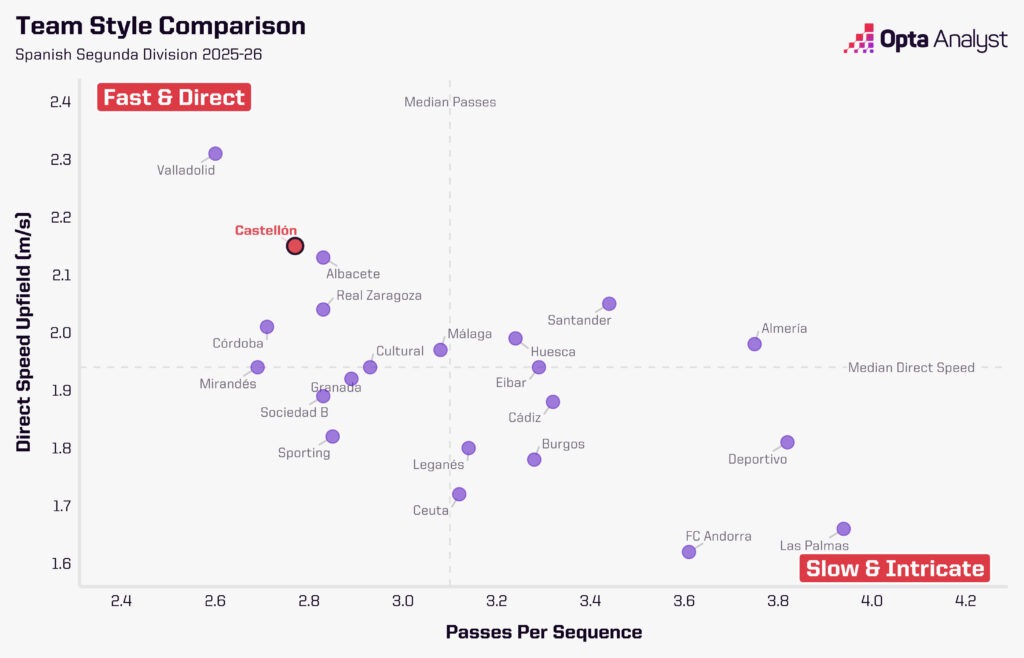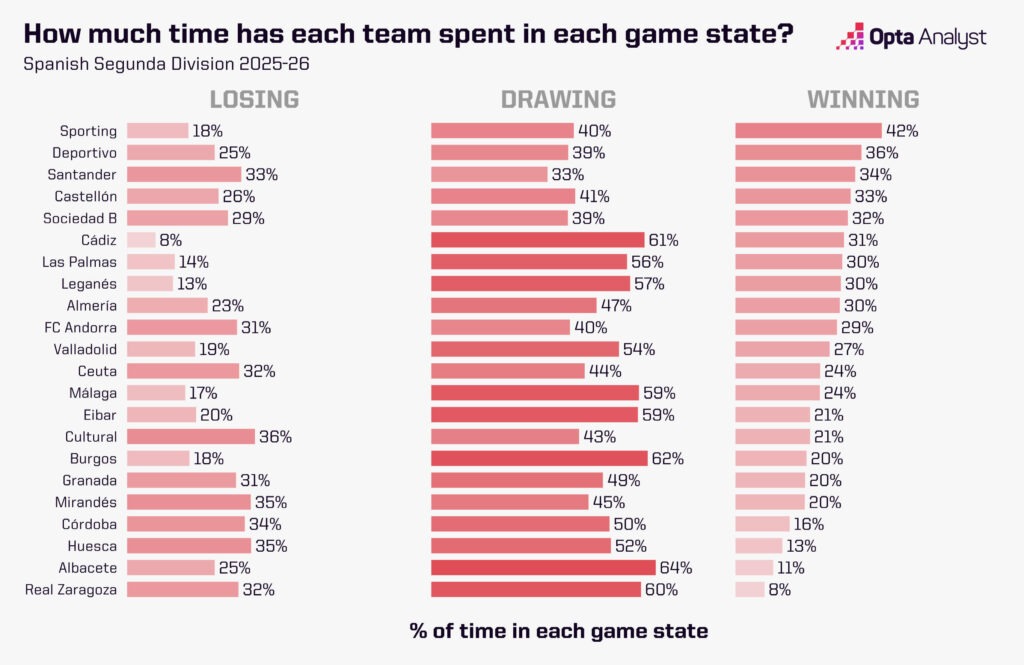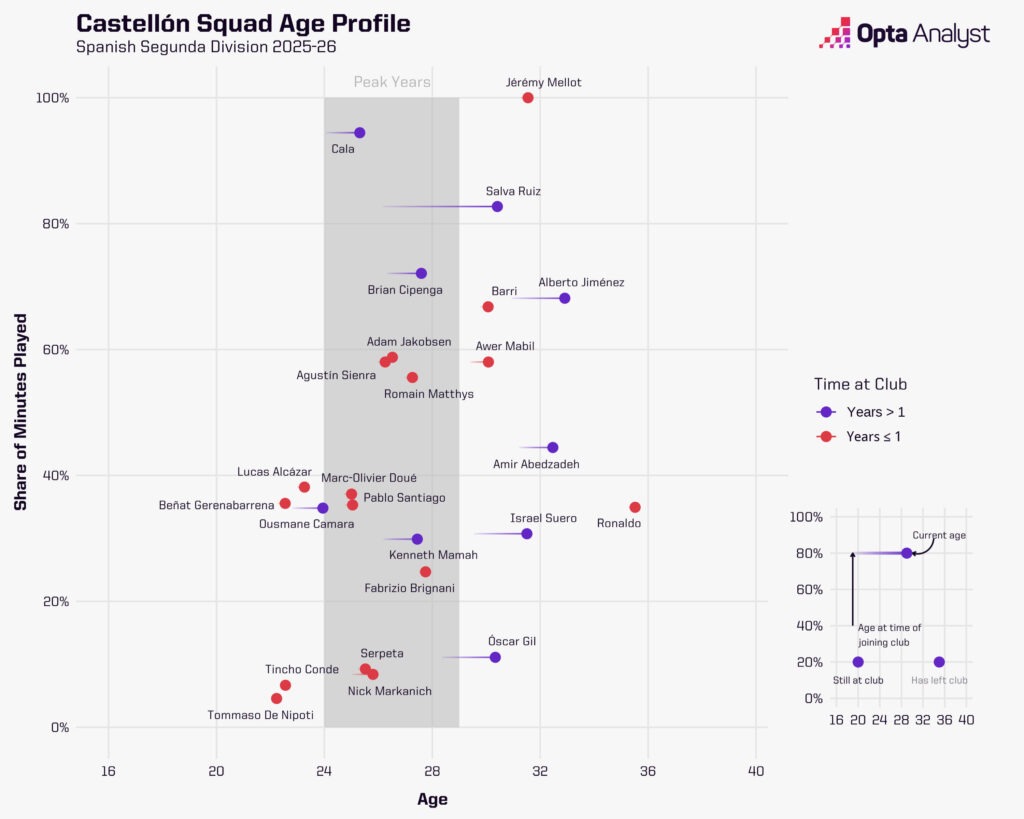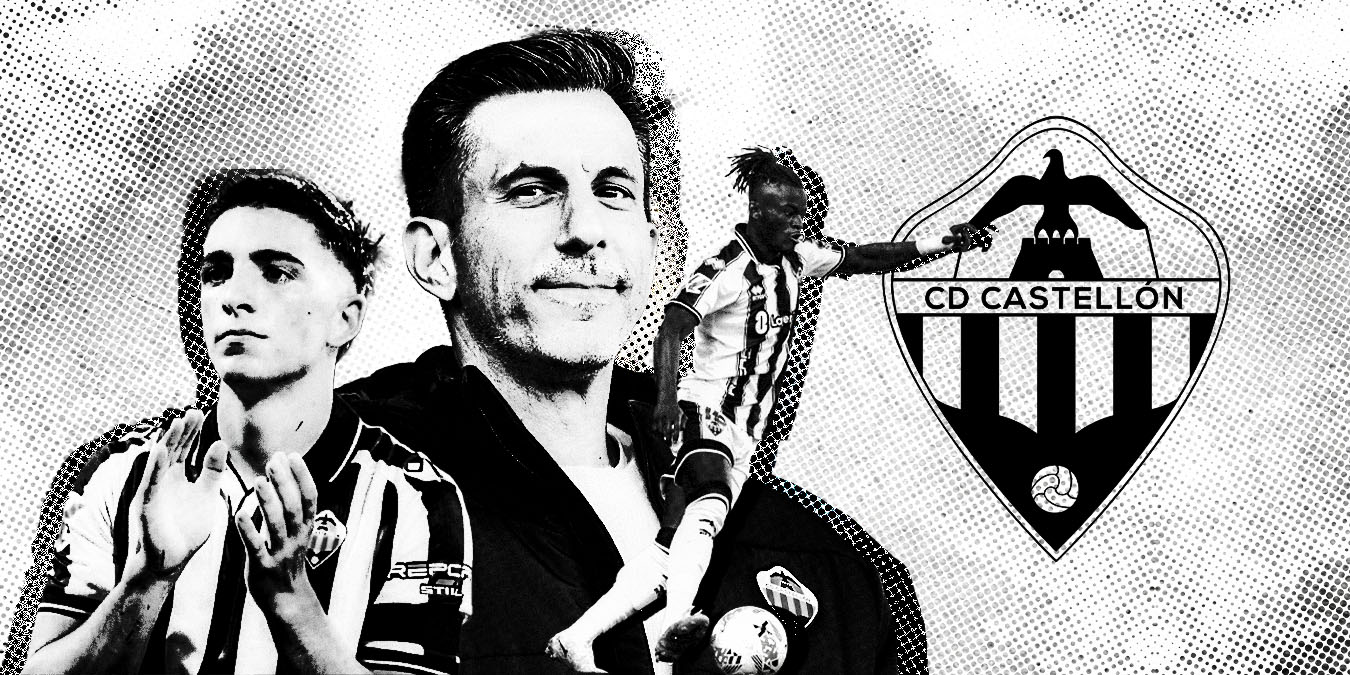Haralabos Voulgaris
bought Spanish second division side Castellón after leaving the NBA
and Dallas Mavericks. Now, he is slowly building a culture of
data-driven decision-making.
Haralabos Voulgaris has always existed on the margins of the
sports world.
He witnessed the NBA’s analytics revolution not at its vanguard,
but just behind it. He built models, watched untold hours of
basketball, and searched relentlessly for an edge to beat the
markets until the edges he kept finding started to draw attention.
He took his analytical mind and those models to the Dallas
Mavericks, where he became director of quantitative research and
development.
Voulgaris eventually wanted to buy an NBA franchise and run it
on his own terms, but billionaires kept outbidding billionaires,
and the goalposts (or hoops) kept moving. So, he turned his
attention to a place where he could find even more inefficient
markets: European football.
From the sidelines to centre stage, Voulgaris now spends his
days in Spain running CD Castellón after becoming the club’s
maximum shareholder in 2022. An hour north of Valencia on Spain’s
east coast, the club currently sit 11th in the second division
after spending the last decade and more in Spain’s lower leagues,
even dropping as far as the fourth tier.
Volugaris spent years watching basketball like a codebreaker. He
studied substitution trends, clock management, the rhythm of
in-game adjustments. His brain is trained to spot patterns the rest
of us experience only as vibes. In Castellón, he’s applying the
same logic: rebuild the system, trust the data, ignore the
noise.
But he isn’t doing the rich-guy-plays-football-manager bit. He’s
taking the long way around.
Off the field, there’s a new 23,000-square-metre training
complex in the works with pitches built like a mini stadium, a
space for the women’s and youth teams. There are new sponsorship
deals and a renewed energy on the terraces as Castellón fans ready
themselves for a push up the Spanish football pyramid.
On the field, the data has translated into something tangible,
too. Castellón were promoted to Spain’s Segunda División just a
year after the takeover. They play a high-energy, occasionally
reckless brand of football. Since their return to the second
division, they’re inside the top three in a number of football’s
most important attacking metrics.
Revolutions don’t always necessary look like revolutions. This
one is taking the form of a slow and steady march towards
progress.
Castellón are on the move. And it’s all being driven by
data.
Garbage
In, Garbage Out
With the proliferation of data in sports, it has become easy to
tune out. Too many dashboards, too many metrics, and not nearly
enough time to figure out what any of them mean. In football, as in
every other industry that’s been “disrupted”, the assumption is
that more data equals better decisions. And yet, as Voulgaris told
Opta Analyst, that assumption might be exactly what’s
holding most clubs back.
Data used in the wrong way is worse than not using data at
all.
“I think the rush for clubs to use data without really
understanding sampling or variance can actually widen the gap. The
sharper clubs, the ones who understand how to work with data and
have experience making decisions with data are the ones best served
to lean heavily on data, in my opinion,” he said.
With that in mind, then, the objective isn’t to specifically
become the most “data-driven” club in the world.
“The goal is not to get every decision right, because that is
not realistic. The goal is to consistently make better decisions
than your peers and to keep improving the process that leads to
those decisions,” he added.
“It’s an imperfect science.”
The
Imperfect Science
Much of Voulgaris’ approach, and the things he is trying to do
right as the owner of his own football club, comes from knowing how
dysfunction looks up close.
“When I was with the Mavericks, the front office was, in my
view, far too disorganised,” he said. “The culture of
decision-making was chaotic. The owner was the de facto final
decision-maker, but he wasn’t directly involved in doing the work
behind those decisions. Instead, he’d constantly poll different
people with varying levels of influence.
“What I did like, though, was that if you were willing to really
document your reasoning and show the work behind a player move, you
could convince him. The downside was that you’d often spend more
time debating or trying to persuade someone who hadn’t done the
analysis than actually improving the team.
“That experience shaped how I run things at Castellón. I value
open input, but decision rights are clear, and I avoid the endless
debate loop that comes from unclear authority.”
But soccer brings up it’s own set of problems that basketball
doesn’t have.
“Results dominate everything,” Voulgaris said regarding the
challenges that face him as a football owner.
“And because matches are low-scoring and full of variance,
people often judge decisions by outcomes and small samples instead
of process. In football, a single goal can swing the entire
narrative around a performance. You can play well for five matches,
create more chances, control the game, and still lose two of them
because of a deflection or a missed finish.”
Results-Driven Business
After five games this season, three defeats and two draws,
Voulgaris had seen enough to make a change. He sacked Johan Plat
for Pablo Hernández, who had been working for the club’s second
team and just been promoted into the Segunda RFEF (fourth tier)
with them.
So far, from a data perspective, Voulgaris has to like what he
is seeing. The former Leeds United maestro has improved Castellón’s
xG per game to 1.69 per game from 1.52. They were already high up
the list in xG under Plat (7th) but Hernández has given them the
third-best xG per game in the league.
Maybe more importantly, they now have the fourth-best xG against
in the league (0.78/game). Under Plat, they were conceding double
that amount per game (1.60) for the third-worst mark in the
league.
It’s early days and Voulgaris won’t be getting ahead of himself
given the uncertainty around small sample sizes, but Hernández has
them looking like genuine title contenders. They have the best xG
difference per game under his watch (+3.66) and they are unbeaten
in four games (W3 D1).
They play forward fast, as the graph below shows. And this can
lead to a lot of randomness in results even if the performances are
good. That’s why understanding the underlying trends is so
important.

“That randomness makes it hard to separate performance from
result,” Voulgaris said. “Over time, the noise can drown out good
decision-making, because people are reacting to the last scoreline
instead of the underlying trend. It takes discipline and conviction
to stay focused on process when short-term variance from casuals
are screaming at you to change direction.”
So when fans are baying for the manager’s head and the media
refuses to let it drop, it takes courage and calm to stay the
course. Voulgaris’ convictions are rooted in an attacking brand of
football, a brand of football built to excite.
He previously told The Guardian: “I love our style: we
don’t play for ties. When we played Deportivo, they defended. We
went ahead, they attacked. They scored, defended again. It was
comical to me. That’s the inefficiency. Three points for a win, one
for a draw, zero for a loss, it’s the most basic thing.”
They’ve spent just 41% of their games with the scores level, one
of the lowest in the keague. This is a direct result of a simple
heuristic: it’s better to try to win three points and end up with
zero than settle for one.

A
Sustainable Style
The style, in itself, is productive even if the results haven’t
followed because playing exciting, attacking football gives your
players a platform to shine, which in turn draws the eyes of scouts
from bigger clubs.
“In the NBA, losing is rewarded with a better draft position,
while in football, losing brings the threat of relegation,” he
added. “Player trading is also a core function in European
football, both sporting and financial, whereas it doesn’t exist in
the NBA.”
Castellón’s style has led to player sales, enough to fund the
entire project. This summer they sold Daijiro Chirino, a player
they signed from PEC Zwolle two years ago, to Almería for a
significant profit. Jozhua Vertrouwd, whom they signed for free
after leaving Utrecht U21s, joined Rayo Vallecano for another
massive profit.
The process of filtering players and highlighting potential
transfer targets might be deductive but sometimes it can be
intuitive.
“There have been several cases where I was watching video of a
player the data had highlighted, and another player on the same
team caught my eye,” Voulgaris recalled. “Sometimes that second
player ends up being the real discovery. The data leads you to the
right place, but you still have to stay alert when you are
there.”
A Novel
Approach To Scouting
The transfer market is a main pillar of Castellón’s model, and
it’s no surprise Voulgaris has a novel, data-led approach to
discovering new talent.
It is an almost heretical approach to scouting.
“We do not rely on in-person scouting. Our process starts
entirely with data. We identify players through our models, and
only after that do we watch film to understand their style,
decision-making and personality on the pitch. The data leads, the
video confirms.”
With clubs scouting traditionally, they are limited by their
ability to watch players and it reduces the scope of potential
signings. Castellón have no such limitations. If you don’t need to
worry about the logistics or travelling to and from games, the
entire world is open to you from a scouting perspective.
“With reliable data feeds, you can effectively scout every
league in the world,” Voulgaris continued. “The challenge is not
access, it is translation. Context is crucial. You need to
understand the role the player was being asked to play and how that
role shapes the data.”
Voulgaris has not been shy in bringing in players from different
leagues. Castellón have used players from 15 different countries
this season, the most in the league. They continue to replenish
their squad with players just before or at their peak with an eye
on potential future sales.

Culture
Clash
Spanish football coaching has been exported around the world.
There are more players from Spain playing across Europe’s top five
leagues than any other nation. Four managers in the Premier League
are Spanish; no other nation has more representatives in the
dugout.
Their methods work in that sense but it hasn’t always translated
to innovation within Spanish football itself. A country that has
renowned academies and produces world-class coaches at an
industrial level doesn’t really need to look outside itself for
inspiration and innovation.
But that’s not to say it works perfectly.
“It is easier to change minds when you own the club because you
can set the culture from the top,” he said, explaining how he deals
with this culture clash. “People either align with that approach or
they tend to move on naturally. I do not force anyone to think a
certain way, but embracing data and open-mindedness is part of how
we operate, and that will not change.”
Voulgaris has a simple heuristic for how he thinks about
everything the club are doing: “If we weren’t doing it like this
already, is this how we would start?”
The professional gambler turned football club owner never
realised his dream of owning an NBA franchise, but he is very much
in control at Castellón, putting his data-driven theories to the
test.
Not every decision has been the right one, but Voulgaris’ strike
rate so far is impressive.
Subscribe to
our football
newsletter to receive exclusive weekly content. You should
also follow our social accounts over on X, Instagram, TikTok and Facebook.


